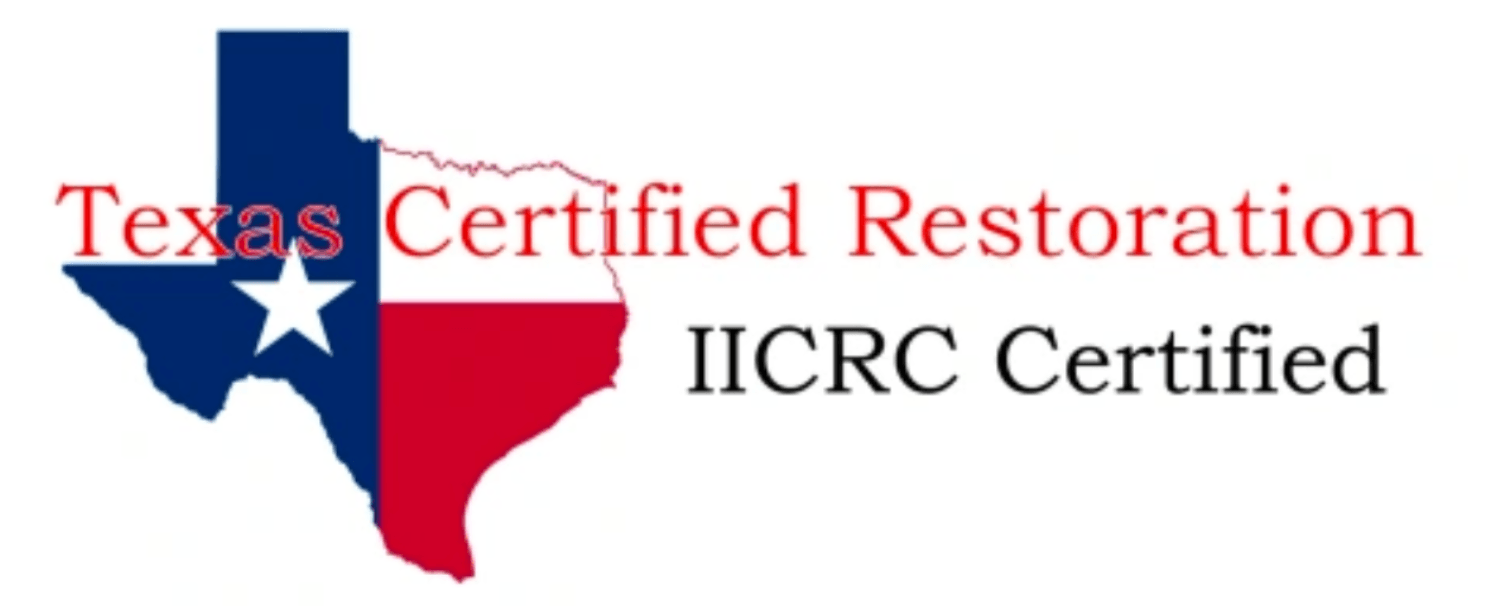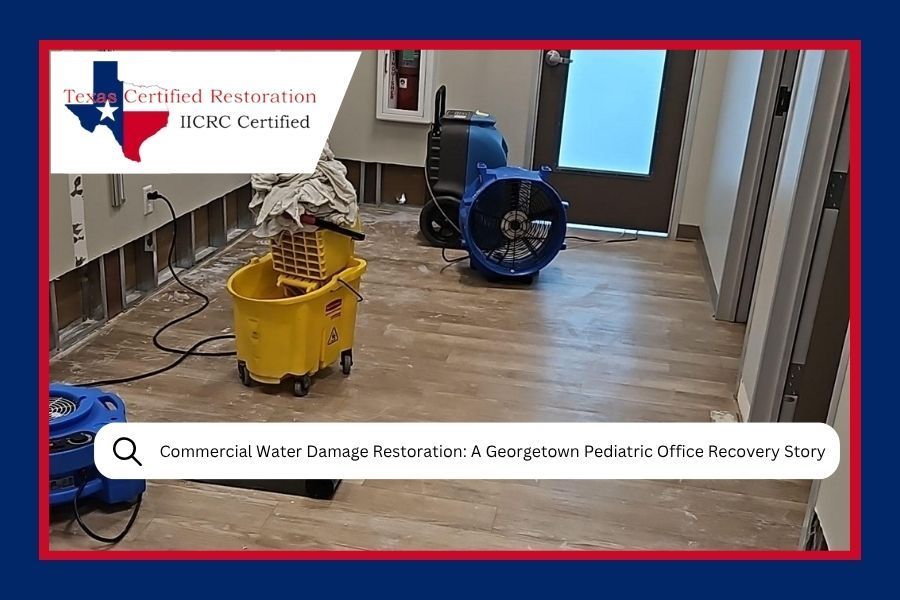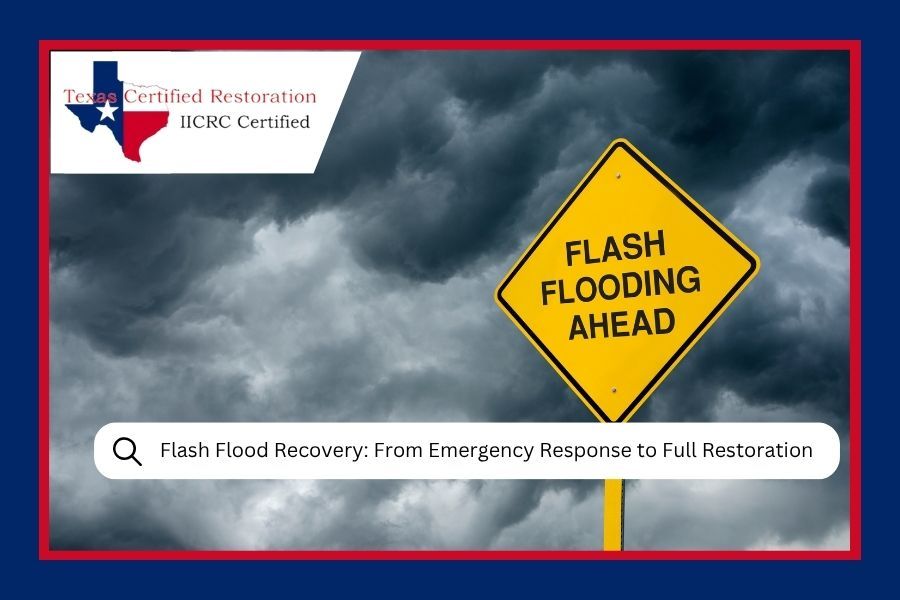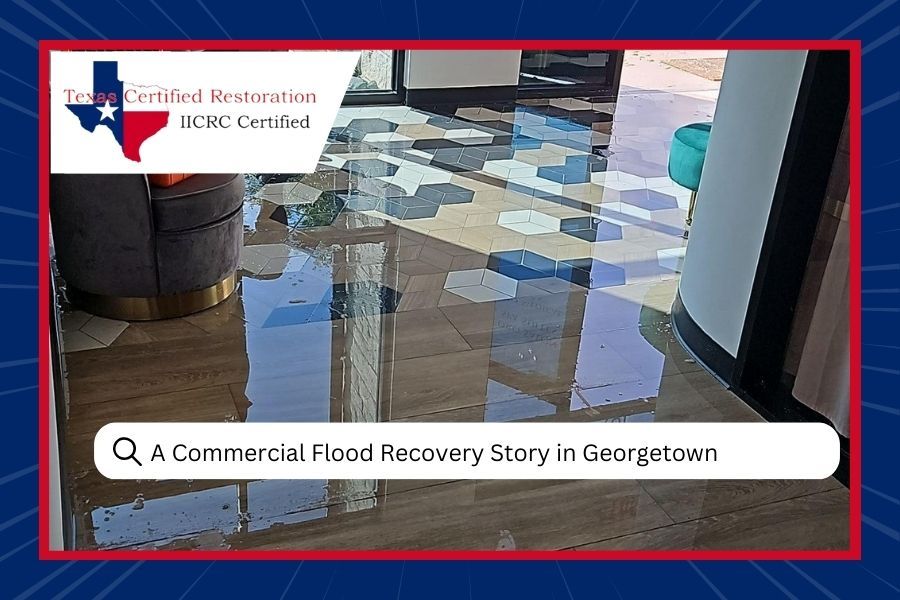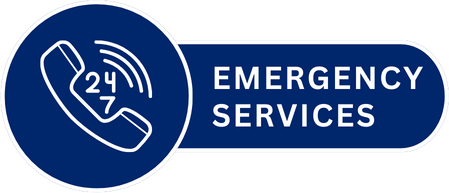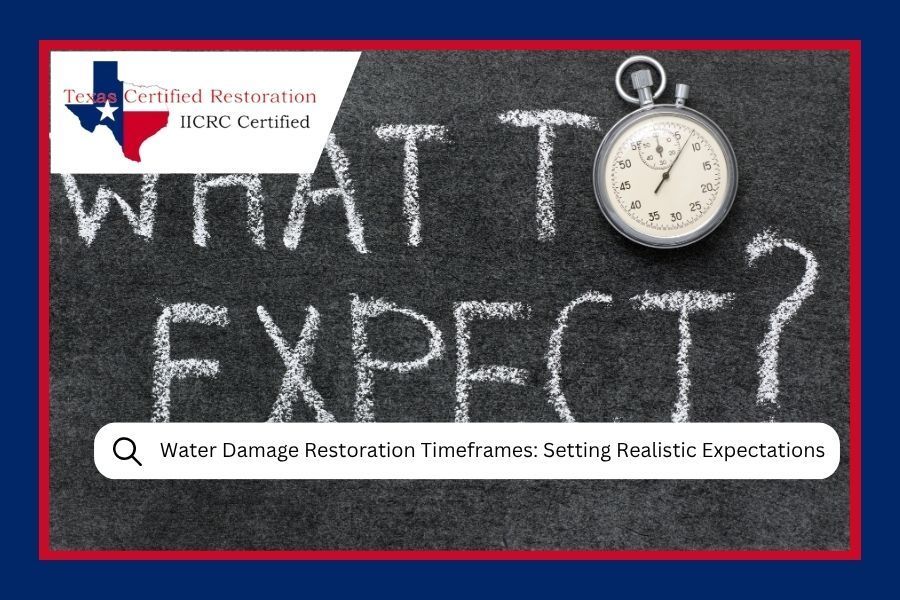
Water Damage Restoration Timeframes: Setting Realistic Expectations
Jump to Section:
- Why Every Water Damage Job Has Its Own Timeline
- The First 24-48 Hours: Emergency Response
- Days 3-7: The Drying Process
- What Affects Your Specific Drying Timeline
- Beyond Drying: Repairs and Restoration
- Managing Expectations and Your Sanity
- When to Expect Delays
- The Bottom Line on Restoration Timelines
- Working With Your Insurance
- Frequently Asked Questions
There's nothing quite like the sinking feeling when you discover water where it absolutely shouldn't be. Whether it's from a burst pipe, a sneaky roof leak, or an appliance gone rogue, your first question is probably: "How long is this going to take?"
At Texas Certified Restoration, we get asked about water damage restoration timelines constantly. And honestly? It's one of those "it depends" situations that nobody wants to hear when they're standing in a puddle in their kitchen. But here's the thing: understanding what affects restoration timeframes can actually help you plan better and stress less. Let's walk through what you can realistically expect.
Why Every Water Damage Job Has Its Own Timeline
If we gave you a one-size-fits-all answer, we'd be doing you a disservice. Water damage is a lot like fingerprints, no two situations are exactly alike. The timeline for your specific situation depends on several key factors that we assess the moment we arrive at your property.
The amount of water matters, obviously. A gallon from a leaky toilet is vastly different from several inches of standing water throughout your home. The type of water plays a huge role too. Clean water from a supply line behaves differently than contaminated water from sewage or flooding.
Then there's the question of where the water went. Hardwood floors, drywall, insulation, carpet, each material absorbs water differently and requires its own drying approach. We've seen water travel in surprising ways, sometimes showing up in rooms far from the original source.
The First 24-48 Hours: Emergency Response and Assessment
Speed matters tremendously in water damage situations. Within the first 24 hours, we're focused on stopping the damage from getting worse. This is the emergency mitigation phase, and it moves quickly.
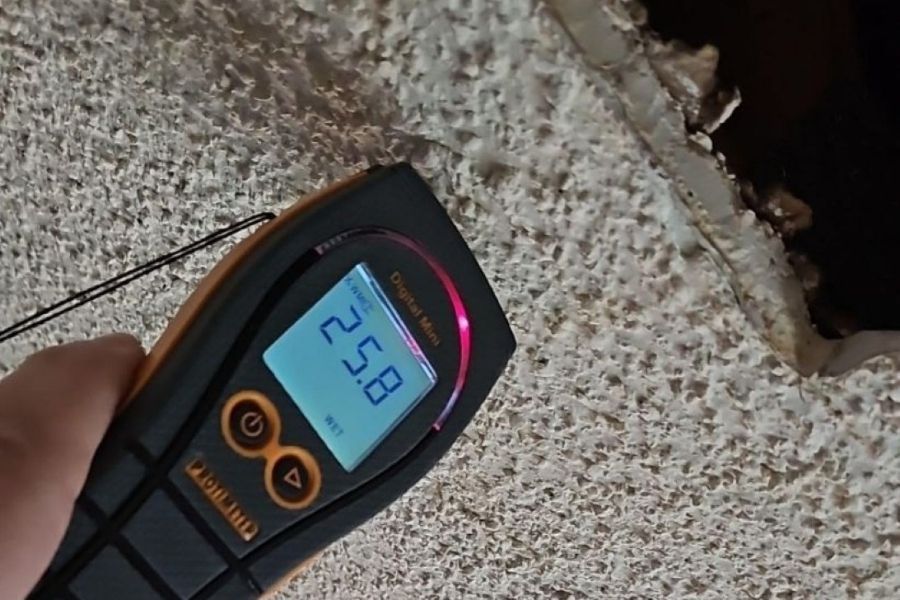
Our team conducts thorough moisture detection and assessment during the initial inspection phase.
When you call us (we're available 24/7, by the way), we'll arrive ready to assess the full scope of the damage. Our team uses moisture detection equipment to find water you can't see, because trust us, there's almost always more than what's visible on the surface. We document everything for insurance purposes and begin water extraction immediately.
What Happens During Emergency Mitigation
Initial Actions (Hours 1-4):
- Source identification and stopping active water intrusion
- Safety assessment of affected areas
- Removal of standing water using industrial pumps and vacuums
- Moving salvageable contents to dry areas
- Beginning of documentation for insurance claims
Setup Phase (Hours 4-24):
- Strategic placement of air movers and dehumidifiers
- Removal of non-salvageable materials like soaked drywall or carpet padding
- Antimicrobial treatment to prevent mold growth
- Initial moisture readings to establish baselines
The first 48 hours are critical because water keeps spreading and materials keep absorbing until we intervene. The longer water sits, the more damage it causes and the longer the overall restoration takes. It's a domino effect we work hard to stop in its tracks.
Our Round Rock team responds 24/7 to water emergencies throughout Travis, Williamson, and Bell Counties.
Call Us Now at (512) 883-6760Days 3-7: The Drying Process
Once the emergency phase is complete, patience becomes your best friend. Proper drying isn't something you can rush, no matter how much you want your life back to normal (and we get it, you really, really do).
Professional drying typically takes 3 to 5 days for most residential situations, but it can extend to a week or more depending on several variables. We're not just waiting for surfaces to feel dry to the touch. We're using moisture meters to ensure materials have returned to their normal moisture content levels. Anything less sets you up for problems down the road.
During this phase, our equipment runs continuously. Those industrial dehumidifiers and air movers aren't quiet, and they use electricity, but they're absolutely necessary for thorough drying. We monitor moisture levels daily and adjust equipment placement as needed. Different areas dry at different rates, and we're constantly adapting our approach.
Think of it like drying a thick towel versus a thin T-shirt. The surface might feel dry, but moisture can be trapped deeper in materials. This is especially true for structural materials, where hidden moisture can lead to bigger problems if not properly addressed.
Water Damage Restoration Timeline
Hours 0-4: Immediate Response
Emergency call, team arrival, source identification, safety assessment, water extraction begins
Hours 4-24: Setup & Mitigation
Equipment placement, damaged material removal, antimicrobial treatment, documentation for insurance
Days 2-7: Active Drying
Continuous equipment operation, daily moisture monitoring, equipment adjustments, progress documentation
Days 7-10: Final Verification
Moisture level confirmation, equipment removal, final inspection, restoration readiness
Days 10+: Restoration & Repairs
Reconstruction begins (if needed), material replacement, painting, final touches
What Affects Your Specific Drying Timeline
Several factors can speed up or slow down the drying process. Temperature and humidity in your home play huge roles. Central Texas heat can actually help with evaporation, but high humidity works against us. That's why we control the environment as much as possible.
The extent of saturation matters too. Surface water dries faster than deeply saturated materials. If water has been sitting for days before we arrive, materials have absorbed more moisture and need more time to dry properly. Quick action is so important when you first discover water damage.
Material type is another big factor. Here's a general breakdown:
| Material Type | Typical Drying Time | Notes |
|---|---|---|
| Hardwood Flooring | 5-7 days | Requires slow, controlled drying to prevent warping |
| Carpet & Padding | 2-4 days | Padding often requires replacement |
| Drywall | 3-5 days | For partial saturation; severe cases need replacement |
| Concrete | 7-14+ days | Porous and retains moisture longer |
| Insulation | N/A | Usually requires replacement rather than drying |
We've handled everything from small leaks to extensive flooding situations , and each one teaches us something new about how water behaves in different scenarios.
Beyond Drying: Repairs and Restoration
Once everything is thoroughly dried and we've verified safe moisture levels, the actual restoration work begins. This is where timeframes can vary dramatically based on the scope of damage.
Minor repairs might only take a day or two. Maybe we're replacing a section of drywall, repainting a room, or reinstalling baseboards. But if your water damage was extensive, repairs could take several weeks. Flooring replacement, cabinet work, electrical repairs, these all add time to the overall project.
At Texas Certified Restoration, our focus is primarily on the mitigation and drying phases. We want to stop the damage, dry everything properly, and get your home stabilized. For major reconstruction work, we can connect you with trusted contractors who specialize in rebuilding.
The truth is, restoration timelines also depend on factors outside our control. Insurance approval processes, material availability, and contractor scheduling all play roles in how quickly your home returns to normal. We work closely with insurance companies to streamline the claims process, but there can still be delays.
Managing Expectations and Your Sanity
Living through water damage restoration is stressful, there's no sugar-coating that. Your home is in disarray, loud equipment is running, and you're dealing with insurance paperwork while trying to maintain some semblance of normal life.
Here's what helps: clear communication. We'll give you realistic timeframes from day one and keep you updated if anything changes. We'll explain why certain steps take the time they do. And we'll be honest about what we can and can't control in the process.
Many homeowners ask if they can speed things up by, say, opening windows or using their own fans. The short answer is: please don't. Professional drying requires controlled conditions and specific equipment placement. Well-meaning DIY attempts can actually slow the process or create new problems. According to the IICRC (Institute of Inspection, Cleaning and Restoration Certification) , proper water damage restoration follows specific standards that ensure complete drying and prevent secondary damage like mold growth.
The better approach is to focus on what you can control. Stay in communication with your restoration team, document everything for insurance, and make decisions promptly when we need your input. The faster you can make choices about materials and repairs, the smoother the process flows.
When to Expect Delays
Sometimes, despite everyone's best efforts, timelines extend. Here are common reasons we see projects take longer than initially estimated:
Discoveries during the drying process can change everything. Maybe we find that water traveled further than initially visible, or that materials we hoped to save are actually too damaged. Hidden damage is surprisingly common, especially in older homes.
Insurance complications can add time. If an adjuster needs to reinspect, or if there's disagreement about coverage, the project pauses until those issues resolve. We advocate for our clients in these situations, but we can't control insurance company timelines.
Additional damage from delayed response creates longer timelines too. If water sat for several days before mitigation began, secondary damage like mold growth might require additional remediation steps.
The Bottom Line on Water Damage Restoration Timelines
Most residential water damage restoration projects follow this general timeline:
- Emergency response and water extraction: Same day or within 24 hours
- Drying and dehumidification: 3-7 days
- Minor repairs and restoration: 1-3 days
- Major reconstruction (if needed): 1-4 weeks or longer
Your specific situation might fall outside these ranges, and that's okay. What matters most is that the work is done thoroughly, not just quickly. Rushing the drying process to save time can cost you much more in the long run through mold growth, structural issues, or recurring moisture problems.
At Texas Certified Restoration, we've built our reputation on doing things right, not fast. That said, we understand that every day your home isn't back to normal is a day of stress and disruption. We work efficiently without cutting corners, balancing speed with quality.
Ready to start your restoration with a team that values quality and transparency? Learn More About Our Water Damage Services
Working With Your Insurance Throughout the Process
Understanding your timeline also means understanding how insurance affects the process. Most homeowners insurance policies have specific requirements for documentation and procedures. We work with insurance companies regularly and know what they need to see through our damage restoration insurance claim assistance.

Proper documentation throughout the restoration process helps streamline your insurance claim and speeds up approval times.
The initial assessment and documentation we do serves multiple purposes. It guides our restoration work, but it also provides the evidence your insurance company needs to process your claim. Good documentation can actually speed up the overall process by preventing disputes or requests for additional information.
If you're unsure about what your homeowners insurance covers for water damage, we can help you understand your policy and navigate the claims process. We're not insurance experts, but we've seen enough claims to guide you through common questions.
Your Role in Keeping Things Moving
While we handle the technical work, you play an important role in timeline efficiency. Prompt decision-making helps significantly. When we ask about material choices or repair preferences, quick responses keep the project moving forward.
Maintaining access to affected areas is crucial. We understand you're living in the space, but our equipment needs to stay in place and run continuously for proper drying. Moving equipment or turning it off extends the timeline and can compromise results.
Communication goes both ways. If you notice new water spots, musty odors, or anything else that concerns you during the restoration process, tell us immediately. Catching problems early prevents much larger issues down the road.
Whether you're in Round Rock, Georgetown, North Austin, or anywhere in our service area across Travis, Williamson, and Bell Counties, our team brings the same commitment to thorough, efficient restoration work. We understand the unique challenges Central Texas homes face, from sudden storms to aging plumbing, and we're ready to help 24/7.
